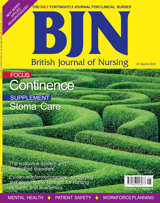References
Patient safety unplugged: going back to basics

Abstract
John Tingle and Amanda Cattini discuss the issue of patient communication and argue that we should not forget about the basics of patient safety when developing policy and designing education and training
Patient safety has become a recognised and valued academic discipline. There is a developing body of knowledge attached to it, and reports discussed in this column have generally offered thoughtful and well-researched information, conclusions, recommendations, and advice. Patient safety has many aspects to it—subjects covered can include psychology, law, ethics, sociology, business subjects such as leadership skills, change management and communication studies, as well as the health sciences, medicine, nursing and allied professions.
In researching patient safety and looking at helpful tools and trends there is a lot of deep thinking to do. The area is a complex one with competing underpinning conceptual theories. There is also a lot of sometimes quite complex information to unpack and to practically apply. Not every suggestion that an author or contributor makes in a research paper can be or even should be adopted. Ideas need to be rigorously tested, reviewed and discussed. There will nearly always be a countervailing viewpoint to consider. Such is the nature of academic discourse.
Register now to continue reading
Thank you for visiting British Journal of Nursing and reading some of our peer-reviewed resources for nurses. To read more, please register today. You’ll enjoy the following great benefits:
What's included
-
Limited access to clinical or professional articles
-
Unlimited access to the latest news, blogs and video content

